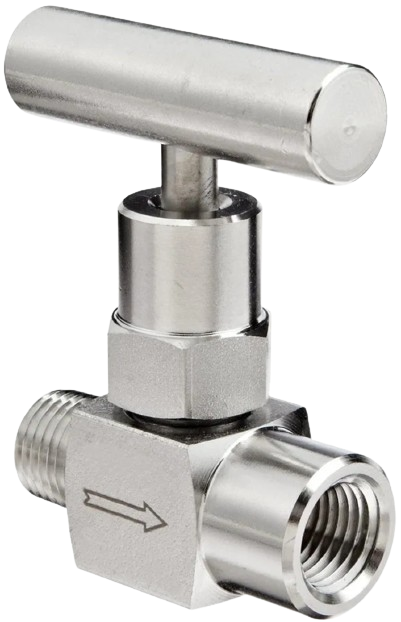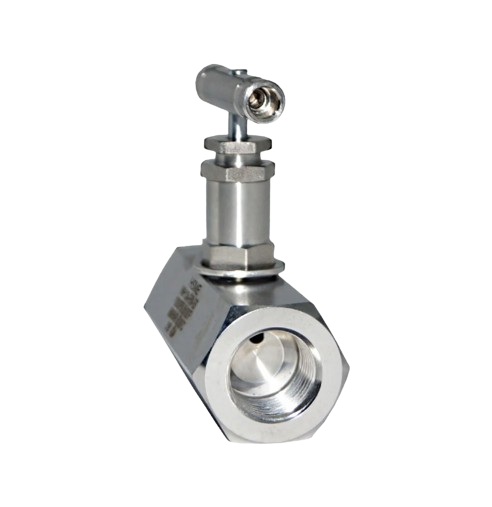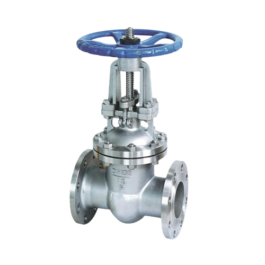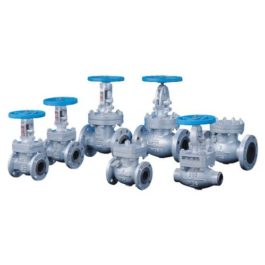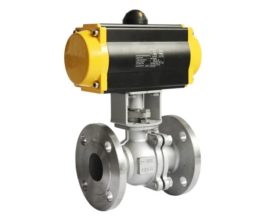Description
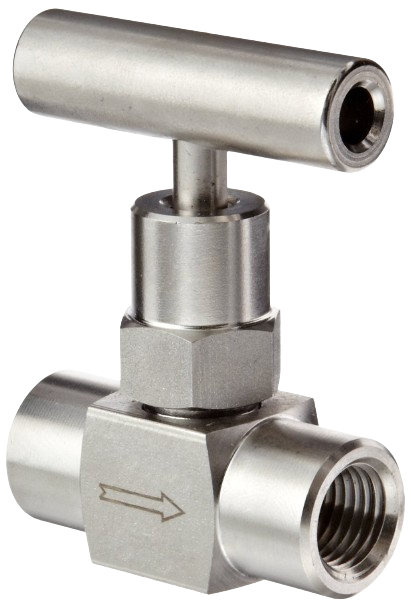 Needle valves made from 304 stainless steel (304SS) are crucial components in various industrial and commercial applications. Their role is vital in controlling the flow of fluids, gases, or other substances through a system, providing both safety and efficiency in operations. These valves, composed of 304 stainless steels, are known for their exceptional corrosion resistance, durability, and versatility, making them suitable for a wide range of environments and purposes.
Needle valves made from 304 stainless steel (304SS) are crucial components in various industrial and commercial applications. Their role is vital in controlling the flow of fluids, gases, or other substances through a system, providing both safety and efficiency in operations. These valves, composed of 304 stainless steels, are known for their exceptional corrosion resistance, durability, and versatility, making them suitable for a wide range of environments and purposes.
304 stainless steel is an austenitic steel alloy containing chromium (approximately 18-20%) and nickel (approximately 8-10.5%), which grants it excellent resistance to oxidation and corrosion, especially in environments exposed to moisture and various chemicals. This specific alloy is one of the most commonly used grades of stainless steel due to its balanced properties, including good formability, weldability, and toughness at low temperatures. When it comes to need valves, the selection of 304SS as the material of choice ensures that the valves can withstand harsh operating conditions while maintaining their structural integrity over time.
Construction of Needle Valves
The construction of 304SS needle valves typically involves precision engineering to ensure tight seals and smooth operation. The valves are designed to provide precise control over the flow of substances, which is essential in applications where accuracy is critical. For example, in the pharmaceutical industry, the precise control of fluid flow is necessary to maintain the correct concentrations of active ingredients in drug formulations. 304SS need valves allow for fine adjustments to be made, ensuring that the desired flow rate is achieved without any leakage or contamination.
The reliability of 304SS needle valves is further enhanced by their ability to withstand high temperatures. In processes where steam or hot liquids are involved, such as in power generation or heat exchanger systems, these needle valves must maintain their integrity under extreme thermal conditions. The high melting point of 304 stainless steel, combined with its ability to retain strength at elevated temperatures, makes it an excellent choice for such applications. The valves can operate efficiently in environments where temperatures fluctuate, without warping, cracking, or losing their sealing capabilities.
Environmental Considerations
Environmental considerations also play a role in the selection of 304SS needle valves. Stainless steel is a recyclable material, which means that valves made from 304SS can be recycled at the end of their service life. This contributes to the sustainability of the operations in which they are used. Moreover, the long service life of these valves reduces the need for frequent replacements. Which in turn lowers the environmental impact associated with manufacturing and disposing of industrial components.
In terms of design, 304SS need valves come in various configurations to suit different applications. They can be found in needle, ball, globe, gate, and check valve designs, among others. Each design offers specific advantages depending on the requirements of the system in which the valve is installed. For instance, needle valves made from 304SS are often used in systems where precise control of flow is needed. An instance such as in metering applications. The fine threading of the needle valve stem allows for gradual adjustments to be made to the flow rate. The Adjustments provide a high degree of control over the process.
Versatility of Needle Valves
The versatility of 304SS needle valves extends to their use in harsh outdoor environments as well. The material’s resistance to corrosion caused by exposure to the elements. These elements include rain, snow, and salty air, makes these valves suitable for use in marine and coastal applications. For instance, in desalination plants, where seawater is converted into potable water. The 304SS need valves are used to control the flow of seawater and brine. The valves must resist the corrosive effects of saltwater, and 304 stainless steel provides the necessary protection against such conditions.
In conclusion, 304SS needle valves are indispensable components in a wide range of applications due to their exceptional corrosion resistance. It is also due to their durability, and versatility. Their use spans various industries, including food and beverage, pharmaceuticals, chemical processing, oil and gas, and residential and commercial plumbing. The material properties of 304 stainless steel ensure that these valves can withstand harsh operating conditions. These conditions include exposure to corrosive substances, high temperatures, and variable environmental factors. The precision engineering of these valves allows for accurate control of fluid flow. This makes them essential for processes where reliability and efficiency are paramount. Moreover, the sustainability of 304 stainless steel, coupled with its long service life and ease of maintenance. Finally, this makes these valves a cost-effective and environmentally responsible choice for a wide array of applications.
Specifications
Features:
- 316 Series Stainless Steel
- Positive Drive Hand Bar
- High Pressure/Temperature Capability
- Globe Pattern
- 100% Tested
Technical Data:
- Maximum Operating Pressure: 1000 PSIG @ 70° F
- Operating Temperature Range: 32° F to 250° F
- End Connections: 3/4” FNPT
- Materials of Construction:
- Body: 316 SS
- Stem:316 SS
- Stem Tip, Hard Seat:316 SS
- Stem Packing: EPDM
- Bonnet:316 SS
- Handle:316 SS
- Panel Mounting Nut:316 SS
- Panel Mounting:
- Panel Hole: 0.750″
- Panel Thickness: 3/16” (4.7mm)
- Fits R.O. UltraTec, Axeon, Flexeon and Titan RO Systems
Installation
Preparation
Safety First: Ensure the work area is clean and free of hazards. Wear appropriate personal protective equipment (PPE), including gloves, safety glasses, and protective clothing.
System Shutdown: Turn off the system and relieve any pressure from the piping. Drain the system to prevent leaks or spills during installation.
Inspection: Examine the 304SS need valve and all associated components for any signs of damage or contamination. Clean the valve if necessary.
Valve Orientation and Positioning
Determine Flow Direction: Identify the correct flow direction as indicated on the valve body. The valve must be installed in the proper orientation to ensure correct operation.
Positioning: Align the valve with the pipeline, ensuring that the connection points match. The valve stem should be positioned vertically whenever possible to avoid sediment accumulation and ensure smooth operation.
Pipe Preparation
Clean the Pipe Ends: Ensure that the pipe ends are clean and free of debris, rust, or burrs. Use a wire brush or similar tool to clean the inside and outside of the pipe ends.
Check Alignment: Verify that the pipes are properly aligned and that there is no misalignment that could strain the valve during installation.
Installation of the Valve
Gasket Placement: If using gaskets, place them evenly between the valve flanges and the pipe flanges. Ensure they are properly centered to avoid leaks.
Connection Type
Flanged Connections: Align the valve flanges with the pipe flanges. Insert the bolts and tighten them evenly in a crisscross pattern to ensure even pressure on the gasket. Do not overtighten.
Threaded Connections: Apply an appropriate thread sealant (e.g., PTFE tape or thread sealant paste) to the male threads of the pipe. Thread the valve onto the pipe by hand until snug, then use a wrench to tighten, ensuring not to overtighten to prevent damage.
Welded Connections: Ensure proper alignment before welding. Follow the appropriate welding procedure for 304 stainless steels. Allow the weld to cool naturally; avoid quenching to prevent thermal shock.
Final Inspection
Check Tightness: Verify that all connections are secure and that there are no gaps or misalignments. Re-tighten bolts or threaded connections as necessary.
Valve Operation: Manually operate the valve stem to ensure smooth movement. Check that the valve opens and closes fully without resistance.
Pressure Test: Gradually restore pressure to the system. Inspect for leaks around the valve connections. If leaks are detected, depressurize the system and re-tighten connections or replace gaskets as needed.
System Recommissioning
Slow Pressure Increase: Slowly reintroduce the working pressure into the system, monitoring the valve and surrounding connections for any signs of leakage or stress.
Final Operational Check: Operate the valve under normal working conditions to ensure it functions correctly within the system. Verify that the valve is sealing properly when closed and that there is no excessive vibration or noise during operation.
Documentation
Record Keeping: Document the installation, including the valve model, installation date, and any observations or adjustments made during the process. This information is vital for future maintenance and troubleshooting.
By following these steps, the 304SS need valve will be installed correctly, ensuring optimal performance and longevity within the system.
Maintenance
The maintenance of needle valves is essential for ensuring their long-term reliability and performance. The process begins with preparation. Before starting, ensure that the system is depressurized and that all fluids have been drained from the valve to prevent accidents. Appropriate personal protective equipment, such as gloves and safety glasses, should be worn throughout the procedure. The first step in the maintenance process is to inspect the valve externally. Look for signs of wear, corrosion, or leaks around the valve body and connections. Any visible damage should be noted and, if necessary, the valve should be scheduled for replacement.
Next, the valve should be operated manually to check for smooth movement of the stem. Resistance or difficulty in turning the handle may indicate internal issues such as corrosion, debris buildup, or wear on the internal components. If the valve does not operate smoothly, it should be disassembled for further inspection. To disassemble the valve, carefully unscrew the bonnet or gland nut using the appropriate tools, taking care not to damage the threads. Once disassembled, remove the needle, seat, and any other internal components. Inspect these parts for signs of wear, corrosion, or debris. The needle should be free of any scoring or pitting, and the seat should be intact without any signs of erosion. If any components are damaged or worn, they should be replaced with new parts to ensure the valve’s continued performance.
After inspecting and replacing any necessary components, clean the internal parts of the valve thoroughly. Use a solvent that is compatible with the materials of construction to remove any buildup of debris, sediment, or corrosion. Ensure that all parts are completely dry before reassembling the valve. When reassembling the valve, ensure that the needle is properly aligned with the seat and that all components are placed back in their correct positions. Tighten the bonnet or gland nut securely, but avoid over-tightening, as this can damage the threads or deform the valve body.
Once reassembled, the valve should be tested for leaks. Repressurize the system gradually and inspect the valve for any signs of leakage around the connections and the valve body. If leaks are detected, the valve may need to be disassembled again to check for improper assembly or damaged components. The final step in the maintenance process is documentation. Record the maintenance activities performed, including any parts replaced or issues encountered. This documentation is valuable for tracking the valve’s condition over time and for planning future maintenance.
Regular maintenance of needle valves ensures their reliability and extends their service life, preventing unexpected failures and ensuring the safe operation of the system in which they are installed.
Q&A
Q1: What are 304SS need valves?
A1: 304SS need valves are flow control devices made from 304 stainless steel, designed to regulate the flow of fluids, gases, or other substances within a system. They are known for their corrosion resistance, durability, and precision control.
Q2: What makes 304 stainless steel suitable for need valves?
A2: 304 stainless steel is an austenitic alloy with high levels of chromium and nickel, which provide excellent corrosion resistance, strength, and durability. These properties make it ideal for applications where the valve must withstand harsh environments, including exposure to chemicals, high temperatures, and moisture.
Q3: In which industries are 304SS need valves most commonly used?
A3: 304SS need valves are widely used in industries such as chemical processing, food and beverage, pharmaceuticals, oil and gas, water treatment, power generation, HVAC systems, automotive, aerospace, marine, and residential plumbing.
Q4: How do 304SS need valves ensure sanitary conditions in the food and beverage industry?
A4: The smooth, non-porous surface of 304 stainless steel prevents the accumulation of contaminants, making it easy to clean and sterilize. This ensures that the valves do not compromise the purity of the substances they control, which is crucial in maintaining sanitary conditions.
Q5: Can 304SS need valves withstand high temperatures?
A5: Yes, 304SS need valves can withstand high temperatures due to the heat-resistant properties of 304 stainless steel. This makes them suitable for applications involving steam or hot liquids, such as in power generation or heat exchange systems.
Q6: What types of connections are available for 304SS need valves?
A6: 304SS need valves are available with various connection types, including flanged, threaded, and welded connections. The choice of connection depends on the specific requirements of the system and the application.
Q7: How do I install a 304SS need valve in an existing system?
A7: Installation involves preparing the system by shutting it down and relieving pressure, positioning the valve correctly, preparing the pipes, securing the valve connections, conducting a final inspection, and performing a pressure test. Detailed procedures can vary depending on the connection type and application.
Q8: Are 304SS need valves suitable for outdoor applications?
A8: Yes, 304SS need valves are suitable for outdoor applications, including marine and coastal environments. The corrosion resistance of 304 stainless steel protects the valve from the elements, including rain, snow, and salty air.
Q9: What maintenance is required for 304SS need valves?
A9: 304SS need valves require minimal maintenance, typically limited to routine inspections, cleaning, and ensuring that connections remain tight. Due to the durability of 304 stainless steel, these valves have a long service life and do not require frequent replacement.
Q10: Are 304SS need valves environmentally friendly?
A10: Yes, 304SS need valves are environmentally friendly because stainless steel is a recyclable material. Additionally, their long service life reduces the need for frequent replacements, thereby minimizing the environmental impact associated with manufacturing and disposal.
Advantages / Disadvantages
Advantages of a Needle Valve
Precision Flow Control: Needle valves allow for fine adjustments to the flow rate, providing precise control over the amount of fluid or gas passing through. This makes them ideal for applications where exact flow regulation is crucial, such as in laboratory and process control environments.
Tight Sealing: The design of a needle valve, with a pointed needle-like plunger, allows for a tight seal when closed. This minimizes the risk of leaks and ensures that the flow is completely stopped when required.
Durability: Needle valves, especially those made from materials like 304 stainless steels, are highly durable and resistant to corrosion and wear. This makes them suitable for use in harsh environments and with aggressive fluids.
Versatility: Needle valves can handle a wide range of pressures and temperatures, making them suitable for diverse applications, from low-pressure laboratory settings to high-pressure industrial systems.
Compact Design: Needle valves are generally compact, making them easy to install in systems where space is limited. Their small size does not compromise their ability to control flow effectively.
Slow Flow Control: The fine threading on the valve stem allows for slow and gradual flow control, which is important in applications where sudden changes in flow could cause damage or disturbances in the system.
Disadvantages of a Needle Valve
Limited Flow Capacity: Due to the narrow passageway controlled by the needle, these valves are not suitable for applications requiring high flow rates. They are better suited for controlling smaller volumes of fluid.
Manual Operation: Most needle valves are manually operated, which can be a disadvantage in automated systems where remote or automatic control is required. However, some needle valves can be fitted with actuators for automation.
Potential for Clogging: The narrow orifice in a needle valve can become clogged with particulates, especially in systems where the fluid contains debris or sediment. This can impede the valve’s operation and require more frequent maintenance.
High Cost: Compared to some other valve types, needle valves can be more expensive, particularly those made from high-grade materials like stainless steel. Their precision engineering and tight tolerances contribute to the higher cost.
Slow Response Time: The fine control offered by a needle valve comes at the cost of slower response times. Adjusting the flow rate can be a time-consuming process, which may not be suitable for applications requiring rapid changes in flow.
Not Suitable for on/off Control: While needle valves excel at regulating flow, they are not designed for simple on/off control. Using them in applications where frequent and rapid opening or closing is needed can lead to wear and may reduce the valve’s lifespan.
These advantages and disadvantages should be considered when selecting a needle valve for a particular application, ensuring that the valve’s characteristics align with the operational requirements.
Applications
304SS needle valves are versatile and can be used in a wide range of applications due to their corrosion resistance, durability, and precision control. Here are some of the key applications:
Chemical Processing: Used for controlling the flow of corrosive chemicals, acids, and solvents in processing plants. The 304 stainless steel material ensures resistance to corrosion and maintains the integrity of the valve under harsh conditions.
Food and Beverage Industry: Essential in maintaining sanitary conditions by controlling the flow of liquids and gases in processing, packaging, and distribution systems. Their easy-to-clean surfaces and resistance to contamination make them ideal for this sector.
Pharmaceuticals and Biotechnology: Employed in environments where sterility and precision are critical. These valves help regulate the flow of fluids during the production and formulation of drugs, ensuring accuracy and hygiene.
Oil and Gas Industry: Used in upstream and downstream operations, including drilling, extraction, refining, and distribution. They can handle high pressures, fluctuating temperatures, and exposure to corrosive substances.
Water Treatment and Desalination: Utilized in controlling the flow of water, including in desalination plants where they manage the flow of seawater and brine, resisting the corrosive effects of saltwater.
Power Generation: Applied in power plants, particularly in systems involving steam, to control the flow of steam and other fluids. Their ability to withstand high temperatures makes them suitable for this application.
HVAC Systems: Integrated into heating, ventilation, and air conditioning systems to regulate the flow of air, water, or refrigerants. Their durability ensures long-term reliability in these critical systems.
Automotive and Aerospace: Used in fuel systems, hydraulic systems, and other fluid control applications where precision and reliability are essential. Their resistance to varying temperatures and pressures is crucial in these industries.
Marine Applications: Employed in ships and offshore platforms to control the flow of seawater, fuel, and other fluids. Their corrosion resistance is particularly beneficial in saltwater environments.
Residential and Commercial Plumbing: Installed in water distribution systems to regulate the flow of hot and cold water. Their resistance to corrosion ensures longevity in plumbing applications, even in areas with hard or aggressive water.
These applications highlight the versatility and reliability of 304SS need valves, making them a preferred choice across numerous industries.
Downloads
Drawings
 Needle valves made from 304 stainless steel (304SS) are crucial components in various industrial and commercial applications. Their role is vital in controlling the flow of fluids, gases, or other substances through a system, providing both safety and efficiency in operations. These valves, composed of 304 stainless steels, are known for their exceptional corrosion resistance, durability, and versatility, making them suitable for a wide range of environments and purposes.
Needle valves made from 304 stainless steel (304SS) are crucial components in various industrial and commercial applications. Their role is vital in controlling the flow of fluids, gases, or other substances through a system, providing both safety and efficiency in operations. These valves, composed of 304 stainless steels, are known for their exceptional corrosion resistance, durability, and versatility, making them suitable for a wide range of environments and purposes.
